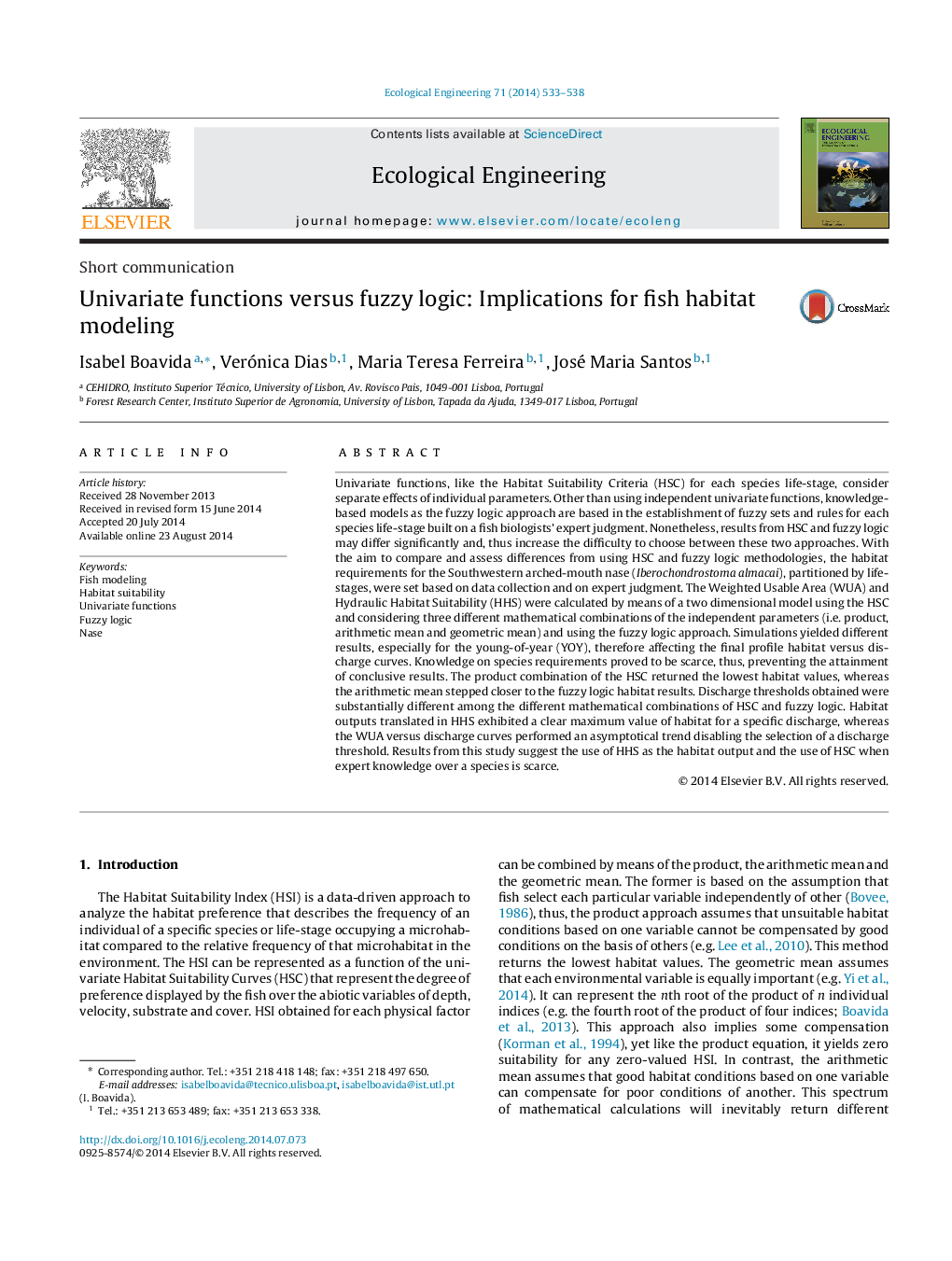| کد مقاله | کد نشریه | سال انتشار | مقاله انگلیسی | نسخه تمام متن |
|---|---|---|---|---|
| 4389193 | 1618028 | 2014 | 6 صفحه PDF | دانلود رایگان |
• Data-driven models should be used when knowledge requirements on a species is scarce.
• The use of HHS seems to give a better interpretation of habitat versus discharge curves.
• Discharge thresholds are different considering the HSC and the fuzzy logic.
• The product combination of the HSC returns the lowest habitat values.
• The arithmetic mean stepped closer to the fuzzy logic habitat results.
Univariate functions, like the Habitat Suitability Criteria (HSC) for each species life-stage, consider separate effects of individual parameters. Other than using independent univariate functions, knowledge-based models as the fuzzy logic approach are based in the establishment of fuzzy sets and rules for each species life-stage built on a fish biologists’ expert judgment. Nonetheless, results from HSC and fuzzy logic may differ significantly and, thus increase the difficulty to choose between these two approaches. With the aim to compare and assess differences from using HSC and fuzzy logic methodologies, the habitat requirements for the Southwestern arched-mouth nase (Iberochondrostoma almacai), partitioned by life-stages, were set based on data collection and on expert judgment. The Weighted Usable Area (WUA) and Hydraulic Habitat Suitability (HHS) were calculated by means of a two dimensional model using the HSC and considering three different mathematical combinations of the independent parameters (i.e. product, arithmetic mean and geometric mean) and using the fuzzy logic approach. Simulations yielded different results, especially for the young-of-year (YOY), therefore affecting the final profile habitat versus discharge curves. Knowledge on species requirements proved to be scarce, thus, preventing the attainment of conclusive results. The product combination of the HSC returned the lowest habitat values, whereas the arithmetic mean stepped closer to the fuzzy logic habitat results. Discharge thresholds obtained were substantially different among the different mathematical combinations of HSC and fuzzy logic. Habitat outputs translated in HHS exhibited a clear maximum value of habitat for a specific discharge, whereas the WUA versus discharge curves performed an asymptotical trend disabling the selection of a discharge threshold. Results from this study suggest the use of HHS as the habitat output and the use of HSC when expert knowledge over a species is scarce.
Journal: Ecological Engineering - Volume 71, October 2014, Pages 533–538
